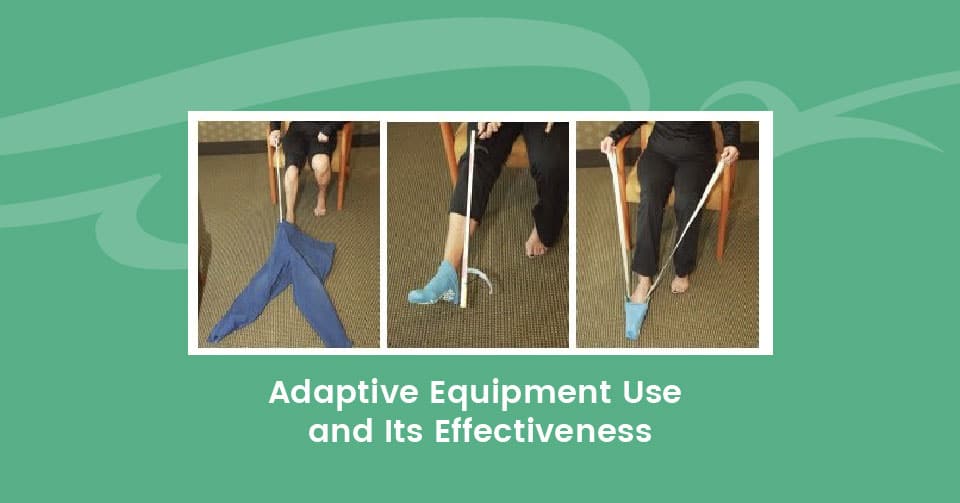
Adaptive equipment is designed to help ease the strain on individuals needing extra support while completing their self-care tasks. Adaptive equipment can be useful for patients struggling to reach their feet and legs to complete dressing. It can also help with putting on socks, shoes, and pants, as this can also be quite difficult if one is having trouble bending or with one’s balance, whether that is from a back injury/pain, balance issues, a stroke, a chronic condition, etc. One of the many benefits of adaptive equipment is that it can help extend your reach, reducing the bending and reaching forward required to put socks, shoes, or pants on.
Here are several other examples of adaptive equipment that may be able to help you:
- A reacher is a device with a trigger that’s used to pick up items. It’s also used to hold pants to extend down to the foot, remove socks, or to place shoes on the feet. The reacher can also be used to hold a washcloth or towel to wash/dry the legs/feet.
- A sock aide helps a person put on socks by placing a sock on the device, using the straps to extend the device down to the feet, and pulling on the cords. The sock is then removed from the device and placed on the foot.
- A long-handled sponge allows for bathing of the lower extremities and back.
- Grab bars can help with stability in the shower or bath
- Canes can help with overall general stability and help with gait issues.
- Shower and Bath chairs can make showering easier as you recover from an injury or surgery.
- Button hooks can help with buttons
A study was conducted of chronic lower back pain patients seen at a major hospital to determine the effectiveness of nine types of adaptive equipment prescribed.
The effectiveness was evaluated using frequency of use and perceived benefit. Of the adaptive equipment in possession by these patients, 87.5 percent were still in use and 85 percent were considered to be of some benefit.
The number of occupational therapy sessions was significantly associated with an increased frequency of use and perceived benefit of the adaptive equipment.
Occupational therapists prescribe assistive devices and adaptive equipment to enhance independent performance of activities of daily living.
This article was written by Melissa Jaworski, MOTR/L. Melissa is the Occupational Therapist practicing at the Phoenix Physical Therapyilitation in Mount Pleasant and Latrobe, PA. She has been practicing occupational therapy for 21 years.
References: The Occupational Therapy Journal of Research, Volume: 10 issue: 2, page(s): 111-121
Issue published: March 1, 1990
